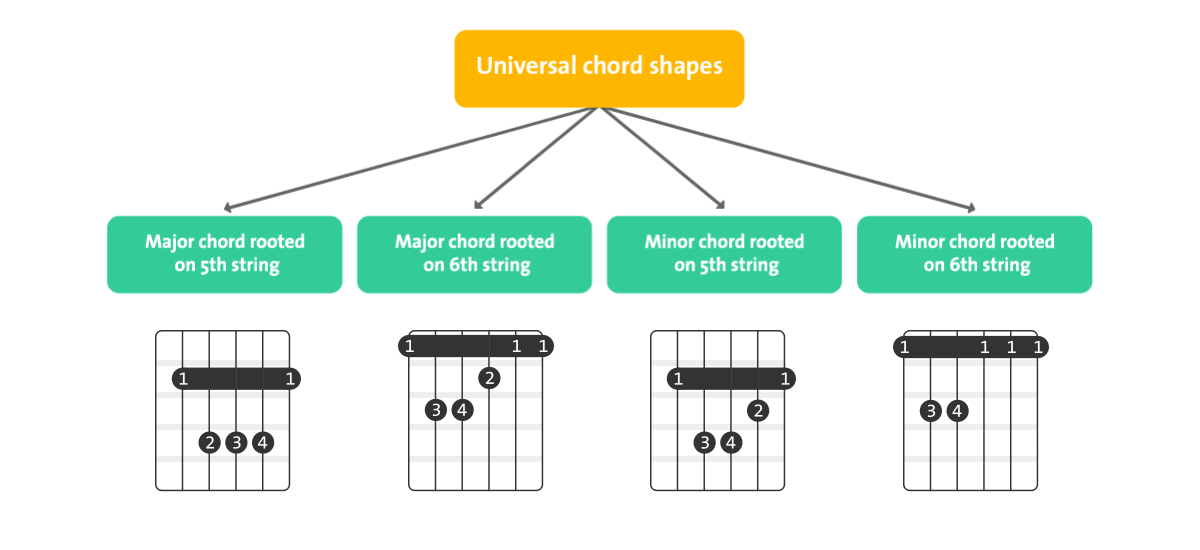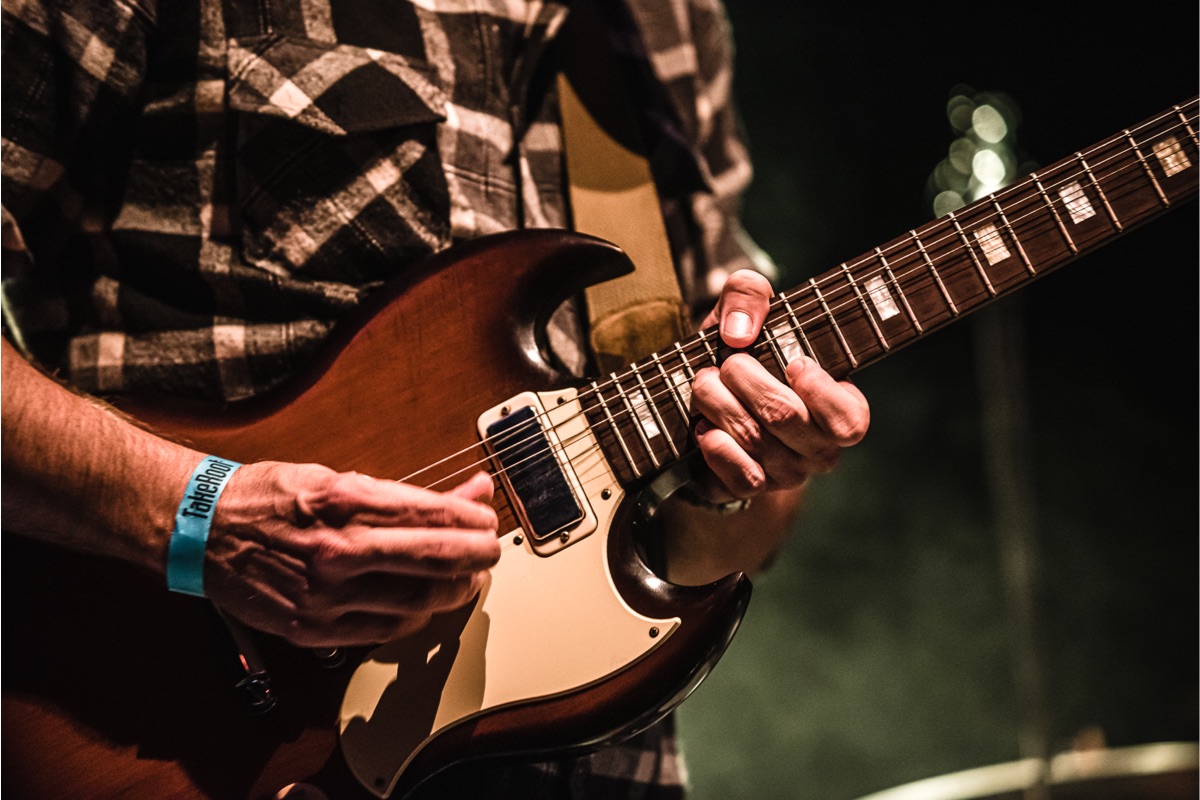Barre chords look and sound scary, but we’re going to change that. After reading this post, you’ll know four universal chord shapes, which you can apply to create any major or minor chord using only the fifth and sixth string. Awesome, right? And that’s not all. We’re going to show you how to use this knowledge in a chord progression, or a chord environment, as we like to call it.
Estimated reading time: 5 minutes
In this blog about barre chords
Introduction
This blog post is your guide on how to use basic barre chords to your advantage in two cases. First of all, you’ll know how to play chords that don’t have accessible open chord fingering. Secondly, by knowing basic barre chords, you will be able to connect different chords smoothly, without jumping up and down the neck, improving your technique and style.
Main takeaway
The guitar is a harmonic instrument, which means that chords can be formed on it — contrary to melodic instruments. Moreover, the great advantage of a guitar is that basic chord shapes can be moved up and down the fretboard, sounding different chords on every fret. This means that by knowing just a few universal chord shapes, you can play many different chords.
In this article, we will only talk about the world of major and minor chords, played on the fifth and sixth string. Other types of chords — suspended chords, seventh chords — are for another day. Let’s dive in, shall we? As always: Don’t forget to tune your guitar first!
Root notes and barre chords
To understand basic major and minor barre chords you should keep one thing in mind: The name of the chord you’re playing depends on the bass note; in basic chords this is also the root note. Since the bass strings on a guitar are the fifth and sixth string, we are going to root our basic barre chords on these two strings.
You can root chords on different strings, but that’s next-level stuff. We’ll discuss that in another article. For now, let’s stick to the basics. For instance, the root note of the C major chord is C; the root note of the C minor chord is…? Yep, C again!

Finding root notes of universal chord shapes
What are universal chord shapes? Universal chords shapes are barre chord fingerings that can be used to form a range of major and minor chords. We use four universal chord shapes that are derived from the open chords E, Em, A and Am. Use them in combination with the barre chord technique to play all possible major and minor chords up and down the fretboard, using the fifth or sixth string to root your chords.

Try all of these shapes (Figure 2). And remember that the name of the chord is derived from the name of the root note. So, the next step is identifying the root note on the fifth or sixth string. To refresh your memory, here are the notes you encounter on the fretboard, counted from the open string to the 12th fret:
- On the sixth string: (o) E, (1) F, (2) F#, (3) G, (4) G#, (5) A, (6) A#, (7) B, (8) C, (9) C#, (10) D, (11) D#, then (12) E again.
- On the fifth string: (o) A, (1) A#, (2) B, (3) C, (4) C#, (5) D, (6) D#, (7) E, (8) F, (9) F#, (10) G, (11) G#, then (12) A again.
Now, let’s say you’re going to play a Bm chord. You can see a B note on the sixth string seventh fret and on the fifth string second fret. Applying one of the minor chord shapes, you can play a Bm minor on the second fret or the seventh.
Read more about major and minor barre chord rooted on the sixth and fifth string:
- Major chord rooted on 5th string
- Major chord rooted on 6th string
- Minor chord rooted on 5th string
- Minor chord rooted on 6th string
Using the chord environment
Let’s talk about the chord environment. “What?” Yeah, those are the chords that directly surround the current chord, in other words, the chords that come before and after the chord you’re currently playing. Knowing the chord environment makes it easier for you to choose where to root your next chord and the universal shape you should use.
For example, let’s try to root our Bm chord in “Shallow” by Bradley Cooper and Lady Gaga. The chord environment in this song is Em, Bm, D. We presuppose that Em and D are played as open chords and we don’t want to travel great lengths on the fretboard. This means our Bm needs to be as close as possible to the open E string or the open D string. That leaves the option of Bm on the fifth string second fret as our closest (and best) option.
Alternatively, let’s say the Em and D are played as barre chords. That means they’re located on the fifth string sixth fret and fifth string seventh fret. Choosing the closest Bm option directs us towards the Bm on the sixth string seventh fret.

Now, knowing how to find universal chord shapes at different root positions on the fretboard and applying them in different chord environments will improve your style and make your chord transitions smoother and faster.
Want to learn more about universal chord shapes? Check out our articles on how to play barre chords. And don’t forget to apply these techniques next time you’re shredding on your axe. Happy jamming!
All music theory and transcriptions by Kirill Dumchenko.


